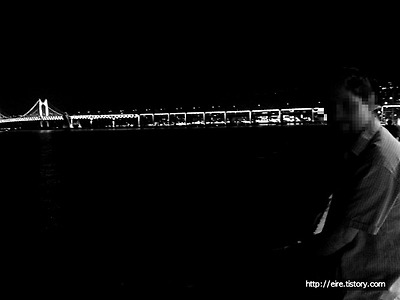악기 하프는 천년이 넘는 기간동안 아일랜드를 대표하는 상징인데요. 비록 현재는 하프가 차분하고 부드러운 소리를 내는 악기로 여겨지지만, 아이리쉬 하프는 전투와 영웅 그리고 전사를 위해 연주되는 열정적인 소리를 내는 강한 악기였답니다. 노래와 음악에 상관없이 하프 연주는 항상 아름다웠어요.

17세기까지 하프 연주자들은 아이리쉬 사회에서 높은 지위를 차지했었어요. 작은 왕국의 지도자들은 항상 왕실에 가장 좋아하는 하프연주자와 가장 좋아하는 시인들을 모셨지요. 시인이 고대 아일랜드로 부터 전해지는 이야기와 전설을 읊는동안 하프 연주자는 그에 맞추어 연주를 하곤했어요. 만약 그 시대에 당신이 훌륭한 하프 연주자였다면 아일랜드로부터 부와 명예, 그리고 대대적인 보호를 받았을거에요. 아일랜드 스타일로 하프를 연주하기란 꽤 어려워서 7살 이전에 하프를 배우기 시작한 사람들만이 훌륭한 하프 연주가가 될수 있었다고 해요.
하지만 불행하게도 16, 17세기에 영국은 아일랜드 내 땅이 비옥한 좋은 지역에서 아일랜드인을 몰아내고 대신 영국이나 스코틀랜드에서 이주해온 정착민들에게 그 땅을 내어주었어요. 우리의 고대 사회는 무너져 갔지요. 영국의 영향력이 점점 커져가면서, 아이리쉬의 오래된 문화들은 대부분 허락되지 않았어요. 이러한 기간동안 하프는 점점 인기가 없어져갔고 오직 몇몇의 지도자들만이 하프 연주자를 계속 지원할수 있었어요. 많은 훌륭한 하프 연주자들은 아일랜드 전역을 돌며 연주를 들려주는 대신 약간의 음식과 잠시동안 잠잘곳을 제공받는 가난한 거지가 되었고 이것이 바로 아일랜드 문화가 어떻게 가난하게 되었는지 잘 보여주는 예라고 할수 있죠.

이러한 연유로 하프는 아일랜드의 상징으로서 아주 의미있는 깊답니다. 하프는 자랑스러운 아일랜드 역사와 숙력된 고대 예술가들, 그리고 아일랜드의 아름다운 음악적 전통을 대표적으로 보여주고 있어요. 하프는8세기부터 고대 묘비에 새겨지기 시작했고, 17세기는 영국에 대항해 싸우던 아일랜드 사람들이 흔드는 깃발이 되어 나타났고, 1922년에는 새로운 아일랜드 자유국을 상징하는 심볼이 되었지요.
지금 더블린에 있는 사람이라면 아일랜드 트리니티 칼리지에 있는 롱 룸을 꼭 방문해보세요. 트리니티 칼리지 하프는14,5세기에 만들어진 아름다운 하프에요. (같은 빌딩에서 북 오브 켈스도 볼수 있어요. 북 오브 켈스는 9세기 만들어진 책으로 문자들이 아름다운 그림처럼 그려져 있어요!)
이전에 포스팅했던 아일랜드 추천 여행지를 보시려면...
2014/12/23 - [여행] - [아일랜드] 6가지 더블린 및 근교 추천 여행 /
six things to do in and around Dublin on a budget.

트리니티 하프가 바로 1922년부터 아일랜드를 상징하는 대표 심볼이에요. 재미있는게, 맥주회사 기네스가 19세기 중반에 먼저 하프 상징에 대해 특허를 받아서 아일랜드 정부는 특허랑 같은 것을 사용할 수 없기에 하프 모양을 바꿔야 했지요. 자세히 보면 기네스에 있는 하프는 왼쪽이 직선, 오른쪽이 아치가 형태이며, 아일랜드 정부 공식 상징 하프 문양보다 현(줄) 수가 좀 더 적답니다.
흥미로우셨나요? 아마도 다음번에 친구들과 기네스를 마신다면 이 이야기를 들려줄수 있겠지요?

The harp musical instrument has been a symbol of Ireland for more than a thousand years. Although today we might think of the music as sounding soothing and gentle, the Irish harp was often a strong instrument which played passionate tunes about battles and heroes and warriors. No matter what the song, the music was always beautiful:
Up until the 17th century harpists were given a high status in Irish society. Chieftains would always have their favourite harpists and their favourite poets with them in their court. The harpist would play a tune as the poet recited stories and legends from ancient Ireland. By being a great harpist you would have great protection and money throughout Ireland. Playing the harp in the Irish style was considered so difficult that only children who started to learn before the age of seven would ever be able to become a good harpist!
Unfortunately in the 16th and 17th centuries England was removing Irish people from the best land and replacing them with English and Scottish settlers. Our ancient society was collapsing. As England's influence grew, many parts of old Irish culture declined. The harp became less and less popular during this period; there were few old Irish chieftains who could support them. Great harpists became poor beggars who would travel around Ireland playing in return for temporary rest and food. These people represented how our culture became poor.

This is why the harp symbol is so meaningful. It represents a proud history, skilled ancient artists and a beautiful musical tradition. The harp has been depicted on ancient gravestones from the 8th century, on flags waved by Irish rebels fighting Britain in the 17th century and as the symbol of the new free Irish state in 1922.
If you're in Dublin you should visit the Long Room in Trinity College, Dublin to see one of the oldest versions of this Irish instrument. The Trinity College Harp is beautiful and dates to the 14th or 15th century (and can be seen in the same building as the Book of Kells, a beautiful 9th century illuminated manuscript).

The Trinity Harp has been used to symbolise the Irish nation since 1922. It's interesting, the company Guinness had already patented the symbol of the harp in the middle of the 19th century so the first Irish government had to change their own harp so it wouldn't look the same! The Guinness harp always has its straight edge to the left and with less strings than the official government harp. Maybe that's a little story you can tell people the next time you're drinking a Guinness!
'우리들의 이야기' 카테고리의 다른 글
| 선물 드려요! / A prize raffle for readers! (18) | 2015.01.17 |
|---|---|
| 해운대에서 류가 사는 법 (8) | 2015.01.16 |
| 왜 새로운 환경을 싫어하나요? / Why do young people criticise their new home so much? (10) | 2015.01.12 |
| 한국에서 내가 좋아하는 것들 / Things I like (9) | 2015.01.11 |
| 한국 드라마 아일랜드 / Korean drama called 'Ireland' (2) | 2015.01.10 |



